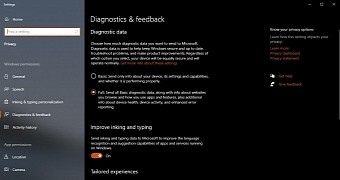Telemetry services in Windows 10 have long been a controversial topic, as many accused Microsoft of spying on users and collecting too much information from devices running this operating system.
While Microsoft has further refined telemetry in Windows 10, the data collection process remained a big concern for some, including for privacy watchdogs who pressured the company for certain improvements that would provide users with more control over their data.
More recently, the Bayerischen Landesamts für Datenschutzaufsicht, which is the German watchdog regulating data protection in the country, found that disabling telemetry completely in Windows is something that can be done in version 1909 as long as the Enterprise and Education editions of the operating system is installed.
Disabling telemetry on Windows 10 Home and Pro
In-lab testing conducted by the agency determined that all telemetry services could be blocked, technically disabling Windows 10 from phoning home to Microsoft to send information.
The analysis, which is available in German here (via German site DeskModder), explains that turning off all telemetry services in Windows 10 Pro isn’t possible – Windows 10 Home and Pro are provided with two telemetry levels, namely Basic and Full, but an option to disable such capabilities entirely are not available.
On the other hand, third-party privacy applications provide users with more controls beyond what Windows 10 comes with by default, including options that would technically make it possible to reduce the data collection to a minimum level. O&O ShutUp10 is one of the most popular, coming with a freeware license.
Microsoft explains that telemetry services are required to collect bug information and crash data that would further help the company refine the operating system and resolve issues that would otherwise be impossible to diagnose. The company says no sensitive information is collected, and all data is securely transmitted to its servers.

 14 DAY TRIAL //
14 DAY TRIAL //